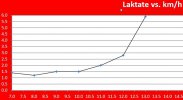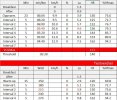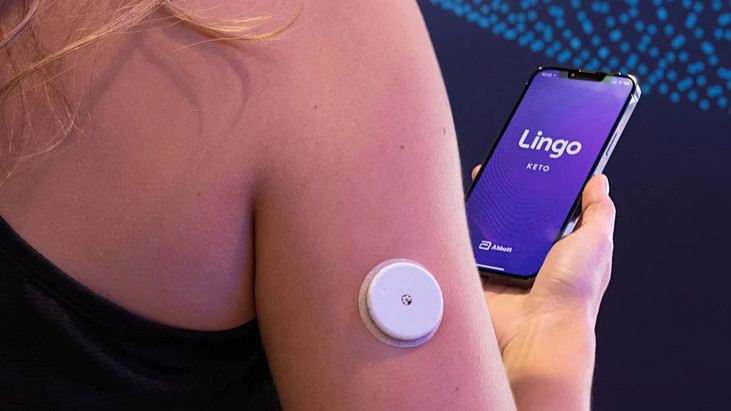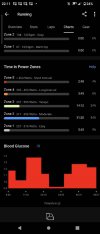No, but it sounds interesting, let us know you discover.
I really don't know what lactate levels to expect, do you use a sensor similar to the CGM sensors to measure lactate interstitially? It would be interesting to see a time-profile of exercise intensity vs blood glucose vs lactate.
As a side note, I'm interested that you carb-load so much before exercise, I tend to eat very little to avoid having too much IoB, but I realise that is in direct contradiction to what is suggested for non-diabetic athletes, and as I need to take some insulin these days to cover even a small breakfast (dawn effect), it probably wouldn't hurt too much to eat more. I have some experimentation to do - as ever, I'd not want to get bored

Dear Simon,
Excellent! I did not expect that anybody would be interested.
I found zero information on lactate testing in diabetics on the net, so somebody has to get the ball rolling. The important thing about exercising for me: It keeps the boredom out of my life!
I bought my first lactate test in September 2022, two weeks after my first triathlon season, at the local professional football team "Brann". The reason I took the test was that my maximum cycling heart rate reproducibly topped 160 /min, when 220 - age was 160. (I have since learnt that this formula is rubbish - maximum heart rate is individual, in my case 172/min measured with Garmin's ECG chest strap ddring a competition.)
The test was at 9 a.m. I had cycled to the test site (6 km) after my standard breakfast (which is 120 g muesli mix without added sugar) + 8 IU Novorapid insulin. The people at "Brann" use the protocol for Norwegian elite athletes ("Olympiatoppen"): I ran on a treadmill with 1° incline. 5 min running, then 1 min pause for measuring blood lactate after pricking my finger. Speed was incremented in steps of 1 km/h every 6 min. As expected, my lactate rose slowly at first and then jumped up to approx. 6 mmol/l at speed between 12 and 13 km/h (see screenshot #1), so my lactate threshold was approx. 12.5 km/h at a heart rate of 158 / min (so 160 /min cycling was still inside my normal capabilities).
(N.B. Some establishments do lactate testing only on certain time slots in the afternoon. Forget it when you have DM1. Everything needs to be standardized for lactate testing.)
Over the winter I went heavily into running, increasing my longest runs from 5 to 10 km and from 5 km/week to 15, and my running speed increased.
In March I took up lactate testing. I train in mesocycles of 4 weeks, increasing the load from week 1 to 3. Week 4 is recovery. I do my running lactate test on Saturdays on a level footpath with roofs from 2 large buildings about 1.8 km apart. The cycling test is on Sunday morning at home. I put my racing bike with Garmin Rally 100 power pedals on a hydraulic bike roll. 180 W warmup for 15 min, then increases of 30 W every 6 min while I prick my fingers after 5 min. (No pause cycling!) I wear a chest strap for reliable heart rate measurements.
I measure from my fingertips using a TaiDoc TD-4289 meter. After pricking your finger wipe off the first drop of blood, then produce some more blood and suck the blood up with the test strip. (We 've done this before, haven't we?) The measurements can be downloaded from the meter after the entire testing protocol is finished. A test strip costs about € 3. At first it is difficult to get enough blood, in the final stages sweat becomes a problem when you do your own measurements without an assistant (which I do).
The problem was that no lactate test since March 2023 (I did more than 3 sets of them, running on Saturdays and cycling the day after) was "normal". I started with lactate values around 3 that quickly increased to 5 - 8 even when I am exercising clearly in my aerobic zone. At first I thought that my meter was defect. But the findings are pretty much reproducible. I attach a screenshot of my combined running/cycling lactate test on 2 successive days in May 2023.
I am quite suprised that I have a pretty high lactate already at low exercise loads. My theory is that hyperglycemia due to my aggressive carbohydrate loading. I eat quite a lot so that my blood sugar shoots up to 14 mmol/l and above because I don't want to experience hypoglucemia when I am swimming in the middle of a cold lake at the start of a triathlon. At the end of my swims, blood glucose is anything between 7 and 14, and I don't want to go below 7. The theory is that my carbohydrate loading induces ketoacidosis that in turn blocks my metabolism of fatty acids so that my entire metabolism is based on glucose so that lactate piles up even at very low loads.
I have not yet been able to test this hypotheses. I ordered ketone strips for my TaiDoc meter, but I was sent a faulty batch. Next time I do my testing, I ought to test ketones in my urine before exercise and after. (I did systematic urine tests for ketonuria before and when I was under dapaglifloxine, both resting and after excercise and NEVER was able to document ketonuria.)
So here is the full documentation - I invite your comments.







